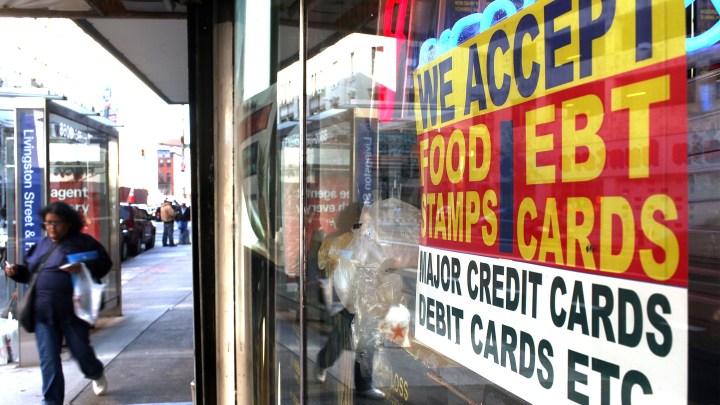
New SNAP rules will affect 700,000 aid recipients — and more than 250,000 retailers
New SNAP rules will affect 700,000 aid recipients — and more than 250,000 retailers

The Trump administration is moving ahead with its plan to tighten work requirements for the Supplemental Nutrition Assistance Program, or SNAP.
The administration says that with unemployment at a historic low, it should be easy for people to find work. It estimates that the changes will save the government $5.5 billion over five years.
Up until now, that’s money that has gone to more than 250,000 retailers that participate in the program. But most of it goes to a particular kind of retailer.
“SNAP participants — because they’re on limited budgets — will tend to go to places that have less expensive food,” said Craig Gundersen, who teaches consumer economics at the University of Illinois. “So, roughly 80% of SNAP benefits are spent at super centers and large-scale supermarkets.”
In other words, Walmart, Kroger, Safeway, and so on.
The rule change will require more people to work at least 20 hours a week to get benefits. Fewer people will qualify.
According to the USDA, “about 700,000 individuals will lose their benefits,” said Ed Bolen of the Center on Budget and Policy Priorities. “Those benefits, on average are about $165 a month for this population. So certainly the places they go will see a drop in their business.”
Food retailers often pay their workers so little that they qualify for SNAP and need it to survive. Those workers’ schedules also tend to be erratic and part-time.
The new rule could make things harder for those workers, said James Ziliak, who directs the University of Kentucky’s Center for Poverty Research.
“In one week, they might be satisfying the work requirement,” he said. “But then the next week, the firm says, well, we don’t need you or we only need you for 10 hours and suddenly they’re in violation of the work requirement for that week.”
Retailers might feel some pressure to consistently give workers at least 20 hours a week so they stay eligible for the SNAP benefits, Ziliak said. Benefits they may even be spending at the stores they work in.
There’s a lot happening in the world. Through it all, Marketplace is here for you.
You rely on Marketplace to break down the world’s events and tell you how it affects you in a fact-based, approachable way. We rely on your financial support to keep making that possible.
Your donation today powers the independent journalism that you rely on. For just $5/month, you can help sustain Marketplace so we can keep reporting on the things that matter to you.


















